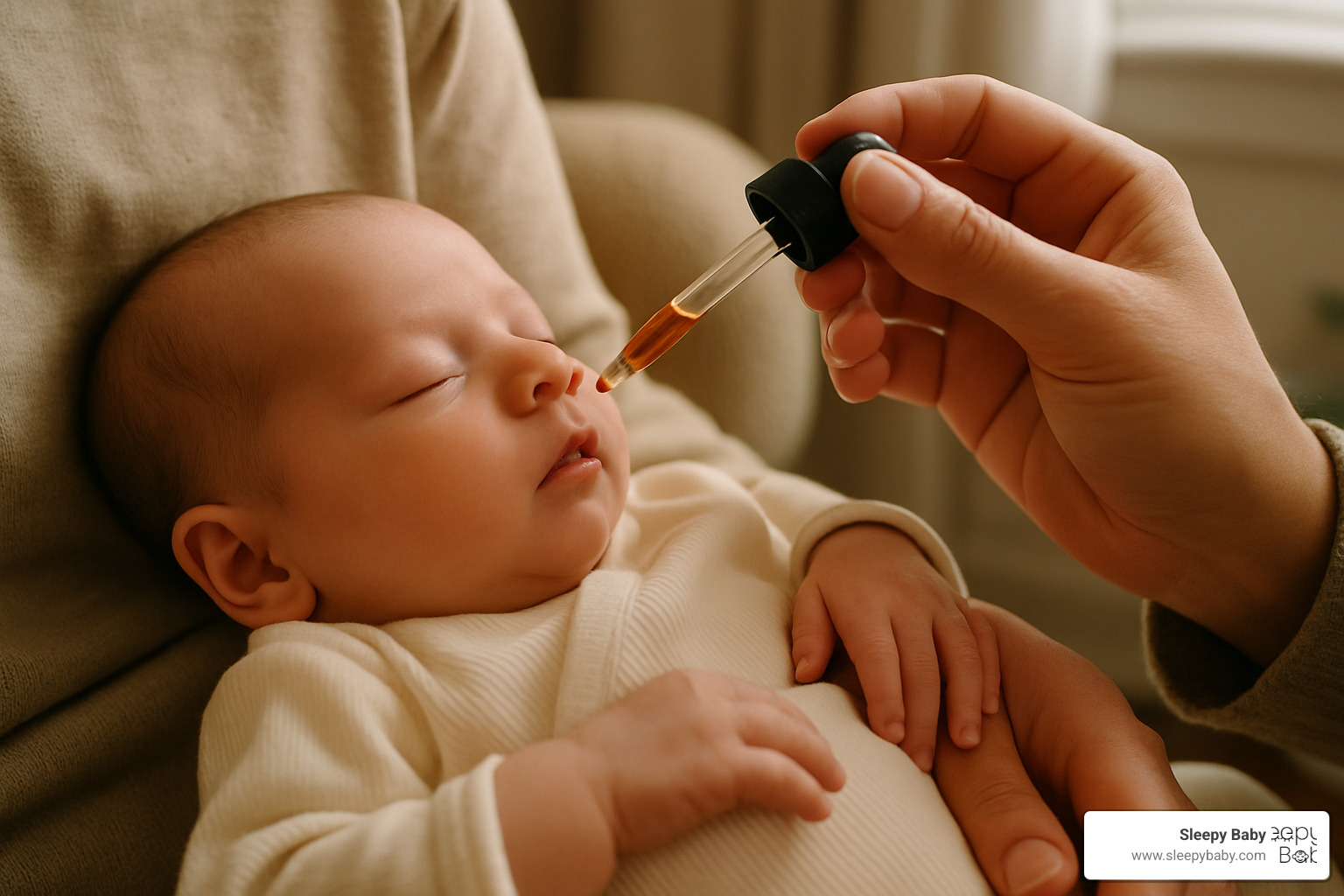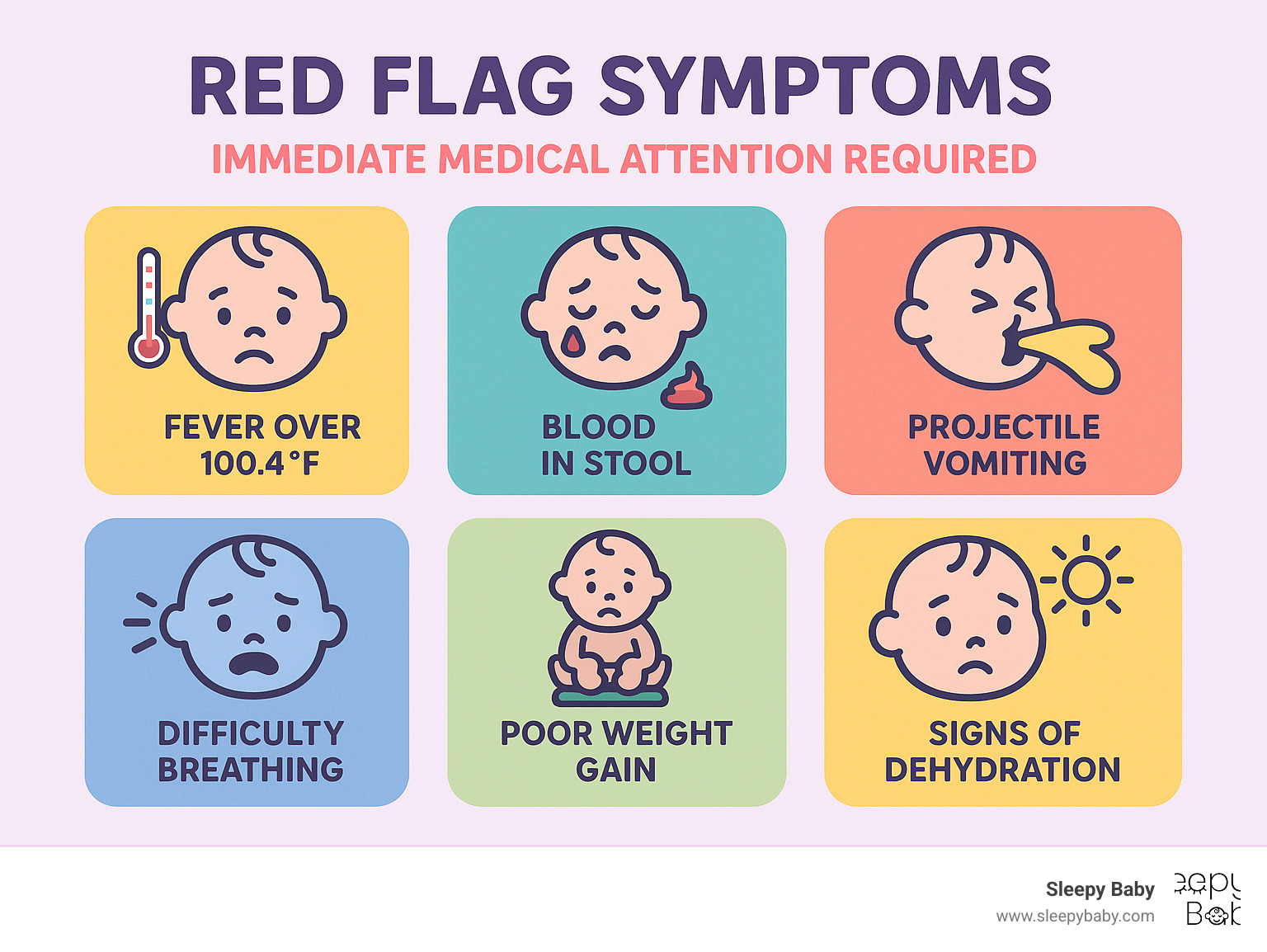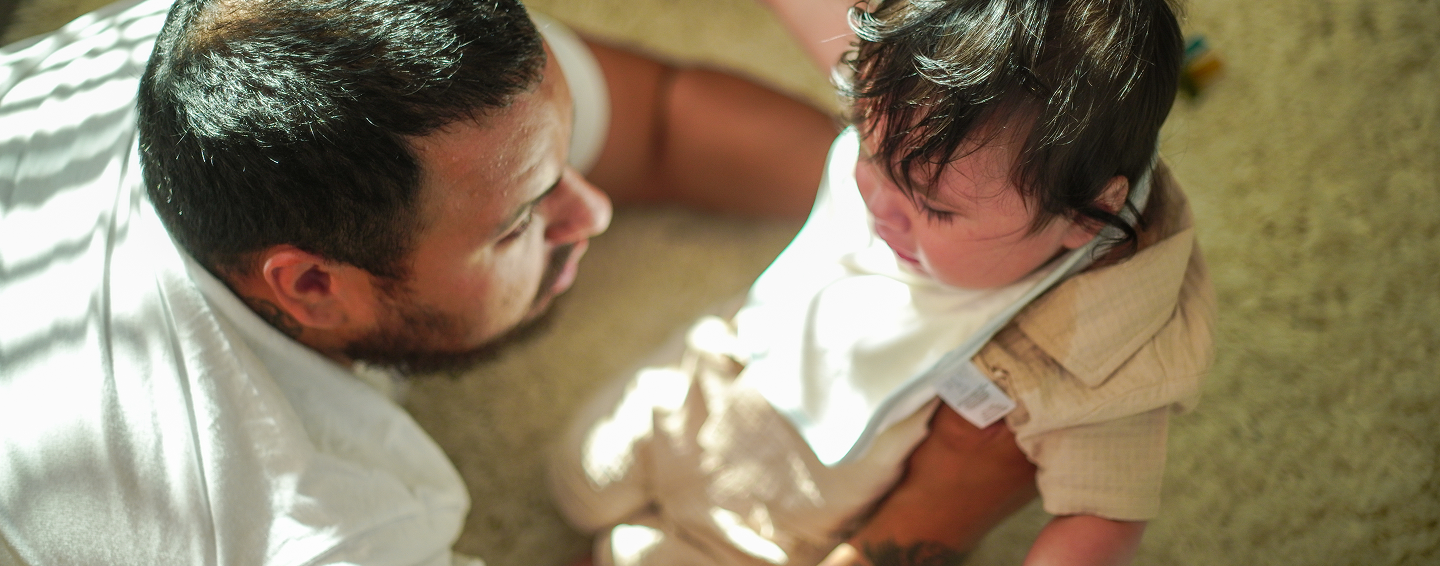When Your Baby Won't Stop Crying: Understanding Colic Relief Options
Colic aid for newborns includes several proven options to help soothe your crying baby:
- Gas drops (simethicone-based) - Break up gas bubbles for easier passing
- Gripe water - Herbal blend with dill, fennel, and sodium bicarbonate
- Probiotics - Support healthy gut bacteria development
- Herbal remedies - Natural oils like chamomile, dill, and fennel
- Anti-colic bottles - Reduce air intake during feeding
Does your baby have regular crying episodes that seem impossible to comfort? You're not alone. About 20% of babies develop colic, usually starting between 2-4 weeks of age. The crying typically peaks at around 3 hours per day by 6 weeks, then gradually decreases by 3-4 months.
Colic episodes often feel overwhelming, but there's hope - colic is temporary, and several safe aids can provide relief. Most colic resolves completely by 3-4 months of age. While you're waiting for your baby to outgrow this phase, the right combination of colic aids and soothing techniques can make a real difference.
I'm Gary Harutyunyan, and as a new father who struggled with my own baby's sleep challenges, I understand the desperation of seeking effective colic aid for newborns that actually works.

Understanding Colic: Signs, Causes & Timeline
When your baby's crying feels different from normal fussiness, you might be dealing with colic. The root cause lies in your baby's immature nervous system - like a computer still learning to process information. Your little one's developing brain hasn't figured out how to regulate all the new sensations of life outside the womb.
Many parents suspect diet, but less than 5% of colic cases are actually due to food sensitivity. While trapped gas can add to discomfort, it's usually a symptom rather than the main problem. Before assuming colic, rule out physical issues like hernias with your pediatrician.
What Is Infant Colic?
Colic is inconsolable crying that resists every soothing technique. The crying often has high-pitched screams and you'll notice your baby pulling their legs up toward their chest or clenching their fists.
Medically, colic follows the "Rule of 3" - crying for more than 3 hours per day, more than 3 days per week, for more than 3 weeks. These episodes typically strike between 6 PM and midnight. For comprehensive information, research on colic basics offers valuable insights.
How Long Does Colic Last?
Colic is temporary. Most babies outgrow it by 3-4 months of age. The timeline follows a predictable pattern: emerges around 2-4 weeks, peaks at 6 weeks (averaging 3 hours of crying daily), then gradually declines to 1-2 hours by 3-4 months.
Evening episodes are typically most intense. Understanding this daily crying pattern helps you prepare. For detailed timelines, when does colic go away provides helpful guidance.
Choosing the Right Colic Aid for Newborns
Choosing colic aid for newborns doesn't require trying everything at once. Match the product to what you're seeing - some babies have obvious gas issues, others have general digestive discomfort. Always check age limits and choose alcohol-free formulations.
Gas Drops vs Gripe Water
Gas drops contain simethicone, which helps tiny gas bubbles stick together to form bigger bubbles that are easier to burp up or pass. It works mechanically and isn't absorbed into your baby's system.
Gripe water blends herbs like fennel and dill with sodium bicarbonate. The herbs relax the digestive system while sodium bicarbonate may neutralize stomach acid.
| Feature | Gas Drops | Gripe Water |
|---|---|---|
| Active Ingredient | Simethicone | Herbal oils + sodium bicarbonate |
| How it Works | Breaks up gas bubbles | Soothes digestive system |
| Best For | Hard belly, visible gas discomfort | General fussiness, digestive upset |
| Safety | Very safe, not absorbed | Generally safe, watch sodium content |
Herbal & Natural Colic Aid for Newborns
Common herbs include fennel, dill, chamomile, and catnip extract. Choose products specifically formulated for infants, follow dilution instructions exactly, and watch for allergic reactions. For evidence-based information, check colic drops: separating fact from fiction.
Probiotics & Emerging Therapies
The gut microbiome might play a role in colic. Probiotics are beneficial bacteria that may help restore balance. The most studied strain is Lactobacillus reuteri, though study results are mixed. The scientific research on probiotics and colic provides detailed analysis.
Safety Checks
Check age recommendations, ensure products are alcohol-free and sugar-free when possible. Look for clear dosage charts based on weight and always consult your pediatrician before starting any colic aid.
Administering Colic Aids Safely & Effectively
Proper administration requires correct dosage, timing, and delivery method. Most colic aids work best before feeding, typically 15 minutes prior. Use weight-based dosing and start with minimum recommended doses.

Dosage & Timing
Place drops on the back of your baby's tongue using the dropper method or try the syringe method for precise delivery. You can mix drops with breast milk or formula to improve palatability. Space doses 4-6 hours apart on an empty stomach. For detailed strategies, see colic conundrum: providing help for colicky babies.
Side Effects & Warning Signs
Constipation is most common with gas drops, while diarrhea can occur with herbal preparations. Mild skin rash might indicate sensitivity.
Stop and call your doctor for allergic reactions like hives, difficulty breathing, or swelling. Persistent vomiting or diarrhea lasting more than a day is concerning. Drug interactions are uncommon, but tell your pediatrician about any supplements. Be careful with post-vaccination timing - wait 24-48 hours before introducing new medications.
Non-Medicinal Tactics to Soothe a Colicky Baby
Combining colic aid for newborns with soothing techniques often works best. These methods address sensory overwhelm by recreating womb-like comfort.
Five Sensory Soothers That Work
Rhythmic motion activates your baby's vestibular system. Try rocking chairs, walks, or gentle bouncing on an exercise ball. Keep movement consistent and rhythmic.
White noise masks sudden sounds and provides comfort. Use fans, vacuum cleaners, or hair dryers at appropriate volumes.
Swaddling recreates snug security. Wrap firmly but allow natural hip movement while preventing startling arm movements.
Warm baths relax tense muscles. Keep rooms warm with fluffy towels ready.
Upright holds help gassy babies. Try chest holds or the "colic carry" - face-down along your forearm.
For detailed guidance, see natural harmony: colic soothing techniques for your baby.
When High-Tech Helps
Sometimes traditional methods aren't enough during brutal evening hours. Our Sleepy Baby device provides rhythmic patting and soothing white noise with hands-free support. Customizable settings adjust to your baby's preferences, offering consistent comfort during exhausting nighttime episodes.

Combining colic aid for newborns with traditional soothing and modern technology creates comprehensive support. You're not failing if you need help - you're being smart.
Supporting Parents: When to Seek Help & Self-Care
Caring for a colicky baby can push parents to their breaking point. Parental burnout is real and common. Building a support network is essential - take turns with your partner and accept help from others.
Remember: never shake a baby. If frustrated, place your baby safely in their crib and step away briefly. Always follow safe sleep rules - back sleeping, firm surfaces, empty cribs.

Red Flags—Call Your Pediatrician
Fever over 100.4°F requires immediate attention in babies under three months. Watch for bluish skin around lips or fingernails, which signals breathing or circulation problems.
Projectile vomiting differs from normal spit-up and could indicate serious conditions. Blood in stool, even small amounts, needs evaluation.
Signs of dehydration include fewer wet diapers, sunken soft spots, and unusual lethargy. Poor weight gain with excessive crying might indicate feeding problems.
For comprehensive guidance on distinguishing normal colic from emergencies, see from fuss to calm: how to treat baby colic.
Don't forget your mental health. If having thoughts of harm, reach out immediately. Postpartum depression can be triggered by colic stress.
Frequently Asked Questions about Colic Aid for Newborns
Can colic aids be used daily, and for how long?
Yes, most colic aid for newborns are designed for daily use. Gas drops with simethicone are safest for daily use since they're not absorbed into the bloodstream. Gripe water and herbal remedies require more caution - stick to dosing guidelines.
Most parents need aids most during the peak crying period around 6 weeks, then gradually less by 3-4 months. If using multiple times daily for weeks without improvement, consult your pediatrician.
Are colic drops the same as gripe water?
No, they're different products. Colic drops contain simethicone that physically combines gas bubbles for easier passing. Gripe water contains herbal ingredients like dill and fennel with sodium bicarbonate to soothe the entire digestive system.
Some modern products combine both approaches. Both are generally safe, so you can try different options with pediatrician guidance.
Is it safe to give a colic aid after vaccinations?
Avoid introducing new medications 24-48 hours after vaccinations. If your baby was already using a colic aid, it's usually safe to continue. Post-vaccination fussiness is normal and different from colic crying.
Always mention any supplements to your healthcare provider during vaccination appointments for complete guidance.
Conclusion
If you're reading this with a crying baby, take a deep breath. You're dealing with one of parenting's toughest challenges - about 20% of babies experience colic. The good news? Most babies outgrow colic completely by 3-4 months.
The right colic aid for newborns combined with soothing techniques can make difficult weeks manageable. Whether gas drops, gripe water, or herbal remedies, you have options. The most effective approach often combines multiple strategies - colic aids for physical discomfort plus rhythmic patting, white noise, and swaddling for sensory overwhelm.
Our Sleepy Baby devices provide consistent, comforting touch when you need a break. Seeking help is strength, not weakness - whether calling your pediatrician, asking family for support, or admitting you need rest.
Trust your instincts throughout this journey. If something feels wrong, contact your healthcare provider. If one aid isn't working, try another. Every baby is different.
This exhausting phase will pass. You're doing incredible work during parenting's toughest challenge. Both you and your baby will emerge stronger, and peaceful sleep will feel even more precious.
For comprehensive strategies beyond colic aid for newborns, see the ultimate guide to soothing a colicky baby (without losing your mind).
You've got this, even when it doesn't feel like it.




